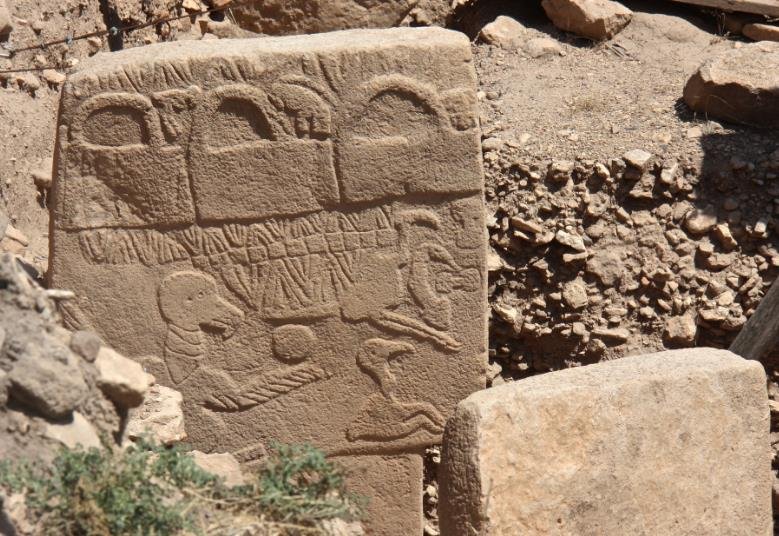The Great Pyramid of Giza, towering at 454 feet, has long been celebrated as a marvel of ancient engineering. But did you know that several other remarkable civilizations existed even before its construction around 2600 BCE? Let’s journey back in time to explore ten lost civilizations that predate Egypt’s iconic pyramids.
Unearthing the Dawn of Humanity
Before the sands of Giza were meticulously arranged into pyramids, other cultures were already making their mark on history. These early civilizations laid the groundwork for human advancement in ways that often go unnoticed.
Take, for instance, the Natufian culture in the Levant. Flourishing around 12,500 to 9,500 BCE, they were among the first to transition from nomadic hunter-gatherers to settled agriculturalists. Imagine the boldness it took to start farming and building permanent homes in such a tumultuous era!
Then there’s the enigmatic Göbekli Tepe in modern-day Turkey. Dating back to around 9600 BCE, this site features monumental stone pillars arranged in circles, suggesting a complex society with religious or ceremonial significance. It’s like the Stonehenge of the ancient Near East, but way older!

Early Powerhouses: Mesopotamia and the Indus Valley
Mesopotamia, often dubbed the “Cradle of Civilization,” saw the rise of the Sumerians around 4500 BCE. They invented one of the earliest writing systems, cuneiform, which revolutionized record-keeping and communication. Picture scribes meticulously pressing symbols into clay tablets – a precursor to our modern writing!
On the other side of the world, the Indus Valley Civilization thrived around 3300 to 1300 BCE in what is now Pakistan and northwest India. Known for their advanced urban planning, cities like Harappa and Mohenjo-Daro boasted sophisticated drainage systems and standardized brick sizes. It’s like living in a futuristic city, but without electricity!
-
- Advanced urban planning
- Sophisticated drainage systems
- Standardized brick construction
- Early form of writing (yet to be fully deciphered)
Mysterious Civilizations of the Americas and Oceania
Long before the pyramids rose in Egypt, the Caral-Supe civilization flourished in present-day Peru around 2600 BCE. Often considered the oldest known civilization in the Americas, they built impressive pyramidal structures and engaged in extensive trade networks. Imagine ancient traders exchanging goods across vast distances, connecting different parts of the continent!
Meanwhile, in the vast expanse of Oceania, the Lapita culture emerged around 1600 BCE. Renowned for their intricate pottery and navigational skills, they were the ancestors of many Pacific Islander groups. Their ability to traverse the open ocean is nothing short of legendary – true adventurers of the ancient seas!
The Enigmatic Norte Chico and the Olmecs
In coastal Peru, the Norte Chico civilization thrived from around 3500 to 1800 BCE. They constructed large platform mounds and sunken plazas, indicating a complex society with social stratification and ceremonial practices. It’s like finding a hidden city beneath the waves of time!
Across the Atlantic, the Olmec civilization in Mesoamerica emerged around 1600 BCE. Often referred to as the “Mother Culture” of later Central American civilizations, they are famous for their colossal head sculptures carved from stone. These massive heads, each weighing several tons, are a testament to their artistic prowess and organizational skills.
Lost Cities: Çatalhöyük and Mehrgarh
The Çatalhöyük in present-day Turkey, dating back to around 7500 BCE, is one of the oldest known urban centers. With its densely packed houses and vibrant murals, it offers a glimpse into early human urban life. Walking through Çatalhöyük must have felt like stepping into a bustling, colorful neighborhood thousands of years ago!
In the fertile plains of modern-day Pakistan, the Mehrgarh civilization flourished around 7000 BCE. It is one of the earliest sites with evidence of farming and herding, as well as intricate beadwork and pottery. Imagine artisans crafting beautiful beads and pottery, adding beauty to their everyday lives!
The Cradle of Technology: Jericho and Byblos
Jericho, located in the West Bank, is often cited as one of the oldest continuously inhabited cities in the world, with evidence of settlement dating back to 9000 BCE. Its ancient walls and towers are marvels of early engineering, providing protection and a sense of community. It’s like having the first fortress in human history!
Byblos in present-day Lebanon dates back to around 5000 BCE and is one of the oldest Phoenician cities. It played a crucial role in the development of the alphabet and maritime trade. The name “Byblos” is actually where the word “Bible” originates, linking this ancient city to religious texts that have shaped cultures for millennia.
